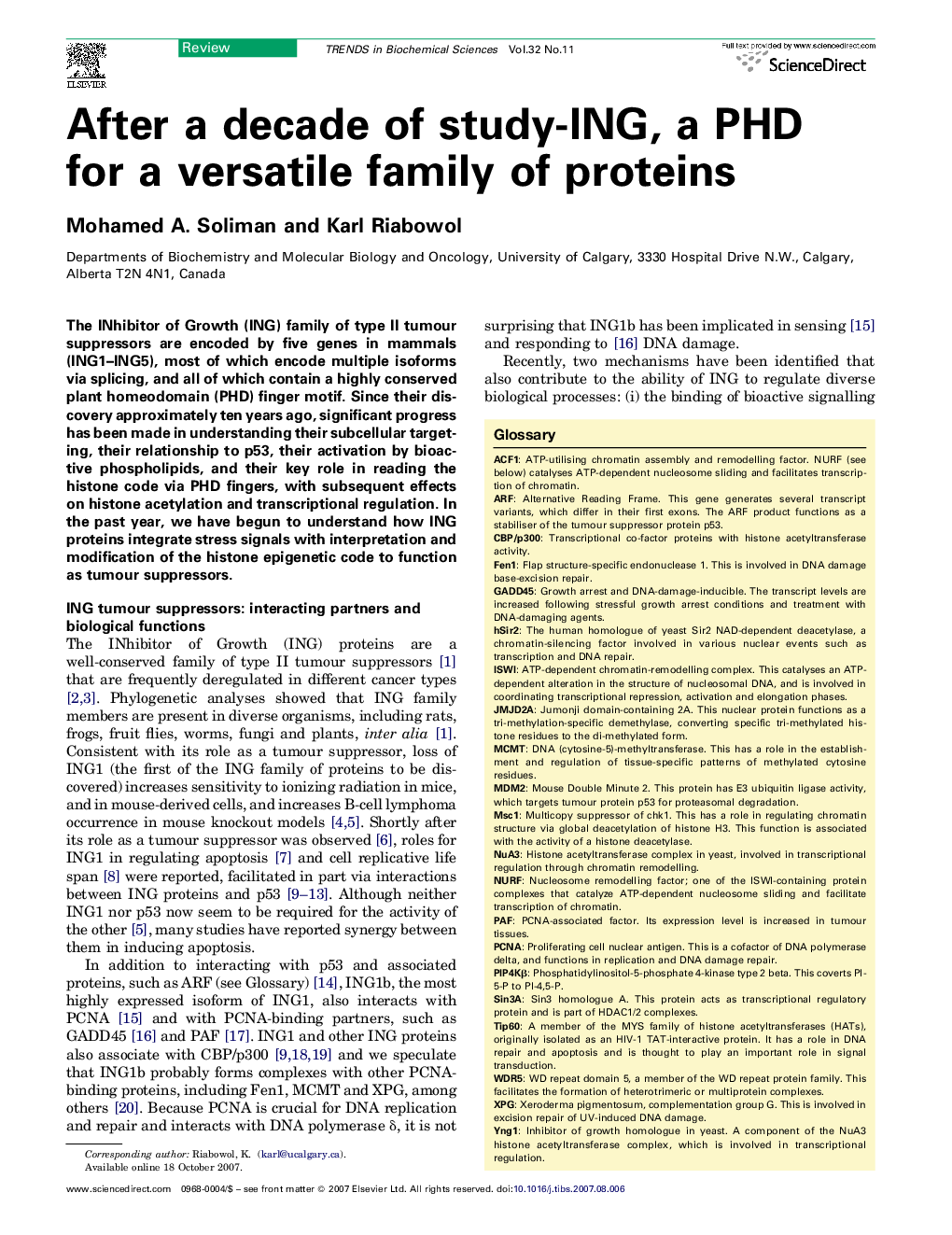| Article ID | Journal | Published Year | Pages | File Type |
|---|---|---|---|---|
| 2031326 | Trends in Biochemical Sciences | 2007 | 11 Pages |
The INhibitor of Growth (ING) family of type II tumour suppressors are encoded by five genes in mammals (ING1–ING5), most of which encode multiple isoforms via splicing, and all of which contain a highly conserved plant homeodomain (PHD) finger motif. Since their discovery approximately ten years ago, significant progress has been made in understanding their subcellular targeting, their relationship to p53, their activation by bioactive phospholipids, and their key role in reading the histone code via PHD fingers, with subsequent effects on histone acetylation and transcriptional regulation. In the past year, we have begun to understand how ING proteins integrate stress signals with interpretation and modification of the histone epigenetic code to function as tumour suppressors.
